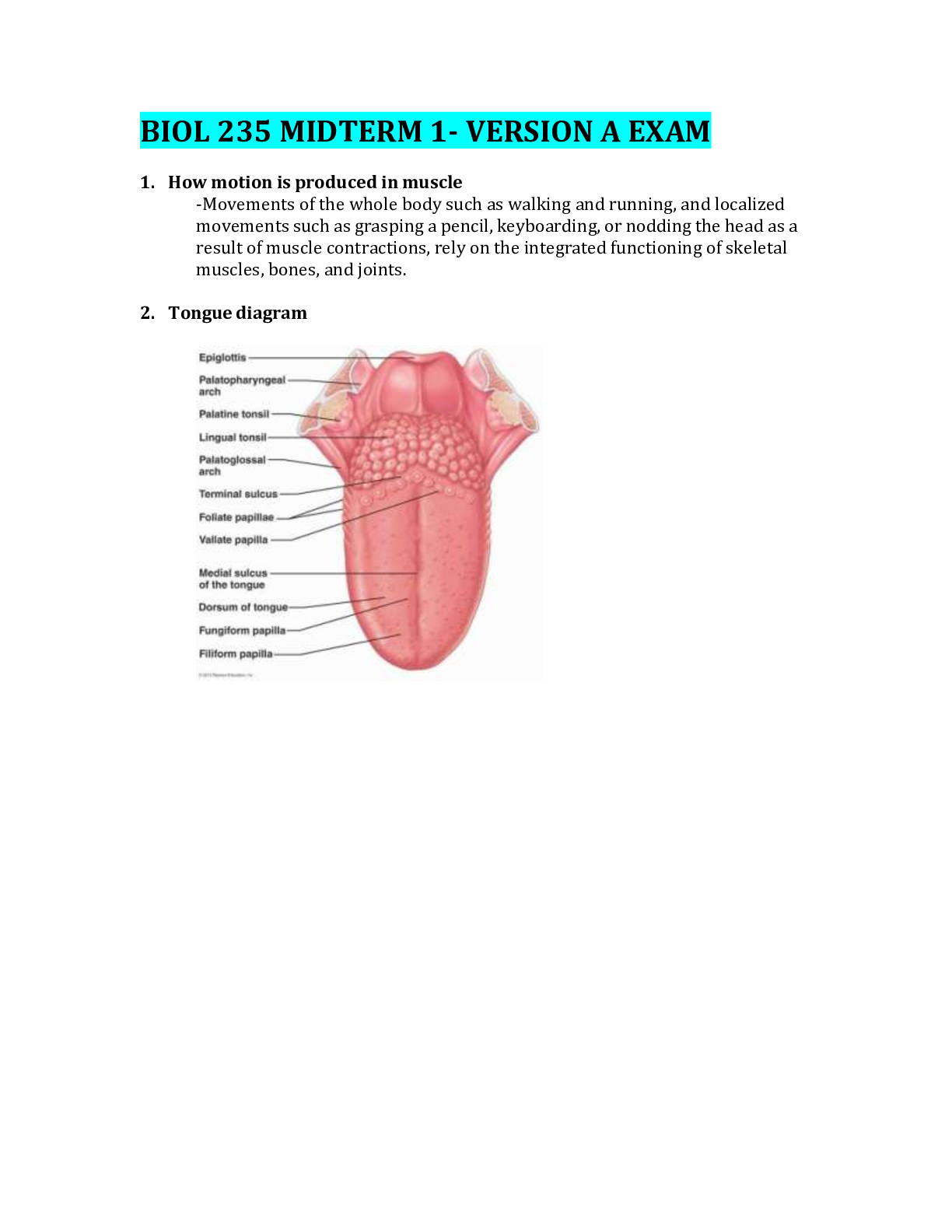PN1-Exam-2-Study-Guide (Complete solution graded A]
Document Content and Description Below
Concept Guide Exam 2 Ethics: The study or examination of morality through a variety of different approaches HIPPA and nursing research in 2003 The law that protects the basic rights and privacy o... f the patient to control the disclosure of that patient’s personal health care information. Information can only be shared with works directly involved with the patient’s care. Ethical responsibility shown by nurse Intermediary: Nurses have more direct contact with patients than any other health care member. They interact more and receive more information. Moral distress: Nurse is aware of the right and moral action to take in any given situation but they are unable to carry out the action because of external constraints (E.g. Heavy workload, lack of nurses, financial constraints in a facility, conflicts with co-workers/managers) Patient advocacy: Speaking for the patient to the fullest extent. It’s up to nurses to plead their sense in a legal manner. Moral principles Veracity: Truth (Obligated to tell the truth to the patient, even if the family doesn’t want you to) Nonmaleficence: Do no harm Autonomy: Requires that the patient have autonomy of thought, intention, and action when making decisions regarding health care procedures. Therefore, the decisionmaking process must be free of coercion or coaxing. In order for a patient to make a fully informed decision, she/he must understand all risks and benefits of the procedure and the likelihood of success. Beneficence: Requires that the procedure be provided with the intent of doing good for the patient involved. Demand that health care providers develop and maintain skills and knowledge, continually update training, consider individual circumstances of all patients, and strive for the net benefit. Fidelity: Strict observance of promises, duties, etc. Justice: Must be distributed equally among all groups in society. Requires that procedures uphold the spirit of existing laws and are fair to all players involved Living will and DPAHC: Living will: Allows a person to show specific documentation of what medical treatment they want or do not want if they become terminally ill. DPAHC: Allows a person to appoint an agent or proxy decision maker to make health care decisions in the case the patients capacity is lost. **The living will goes into effect when a person has a terminal illness and lacks capacity. DPAHC is not constrained by a terminal state of health. Lack of decision capacity may be temporary. Palliative vs hospice Palliative: The process that is focused on relieving pain and physical symptoms, enhancing psychosocial support, and enhancing the families to feel meaningful to resolve the patient’s pain as they are passing. This is comfort care that is NOT federally funded. Hospice: A program that is sponsored by Medicare to provide comfort care for the terminally ill and the families. An individual has to meet specific guidelines. These people have 6 months or less to live. [Show More]
Last updated: 2 years ago
Preview 1 out of 10 pages

Buy this document to get the full access instantly
Instant Download Access after purchase
Buy NowInstant download
We Accept:

Reviews( 0 )
$11.00
Can't find what you want? Try our AI powered Search
Document information
Connected school, study & course
About the document
Uploaded On
Jun 15, 2021
Number of pages
10
Written in
Additional information
This document has been written for:
Uploaded
Jun 15, 2021
Downloads
0
Views
49



 (2).png)


.png)



 (1).png)


.png)

